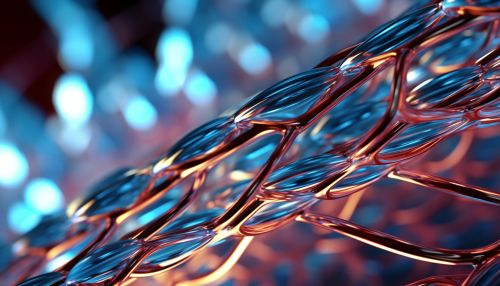Algorithms for Predicting Protein Structure
Introduction
The prediction of protein structure is a fundamental challenge in the field of bioinformatics. It involves the use of computational methods to predict the three-dimensional structure of proteins from their amino acid sequences. This is a complex task due to the vast number of possible conformations a protein can adopt, a phenomenon known as the Levinthal's paradox.


The Importance of Protein Structure Prediction
Understanding the structure of proteins is crucial for several reasons. Firstly, the structure of a protein determines its function. By predicting the structure of a protein, we can gain insights into its biological role. Secondly, knowledge of protein structure is essential in the design of drugs and therapeutic interventions. Many diseases, such as Alzheimer's and cancer, are associated with misfolded proteins or proteins with abnormal structures. By predicting and understanding these structures, we can design drugs that target these proteins more effectively.
Methods for Protein Structure Prediction
There are several computational methods used for protein structure prediction. These can be broadly categorized into three main types: ab initio methods, comparative modeling, and threading.
Ab Initio Methods
Ab initio methods, also known as de novo prediction, attempt to predict protein structure based solely on its amino acid sequence. These methods do not rely on known protein structures for prediction. Instead, they use physical and chemical principles, such as the principles of thermodynamics, to predict the most stable conformation of the protein. Despite their theoretical appeal, ab initio methods are computationally intensive and are currently only practical for small proteins.
Comparative Modeling
Comparative modeling, also known as homology modeling, is based on the observation that protein structures are more conserved than protein sequences. In other words, proteins with similar sequences tend to have similar structures. Comparative modeling methods predict the structure of a protein by aligning its sequence to one or more proteins with known structures (templates) and building a model based on these alignments.
Threading
Threading, also known as fold recognition, is a method that identifies the most probable fold or structure for a given protein sequence from a library of known folds. Threading methods are particularly useful when the target protein shares no detectable sequence similarity with any protein of known structure.
Machine Learning in Protein Structure Prediction
In recent years, machine learning techniques have been increasingly used in protein structure prediction. These techniques can learn complex patterns from large amounts of data and make accurate predictions.


Deep Learning
Deep learning, a subset of machine learning, has shown particular promise in this field. Deep learning models, such as convolutional neural networks (CNNs), have been used to predict protein contact maps, which are representations of all pairwise contacts in a protein structure. These contact maps can then be converted into three-dimensional structures.
One notable example of a deep learning-based method is AlphaFold, developed by DeepMind. AlphaFold uses a combination of deep learning and other techniques to predict protein structures with remarkable accuracy. In 2020, AlphaFold achieved a median Global Distance Test (GDT) score of 92.4 in the Critical Assessment of protein Structure Prediction (CASP) competition, significantly outperforming other methods.
Reinforcement Learning
Reinforcement learning, another subset of machine learning, has also been applied to protein structure prediction. In reinforcement learning, an agent learns to perform actions in an environment to maximize some notion of cumulative reward. This approach has been used to design algorithms that can explore the vast conformational space of proteins and find the most stable structure.
Challenges and Future Directions
Despite significant advances, protein structure prediction remains a challenging problem. One of the main challenges is the prediction of protein complexes, which are assemblies of multiple protein molecules. Predicting the structure of protein complexes is more difficult than predicting the structure of individual proteins because it involves predicting the interactions between different proteins.
Another challenge is the prediction of intrinsically disordered proteins. These are proteins that do not have a fixed structure but exist in a dynamic equilibrium of different conformations. Traditional methods struggle to predict the structures of these proteins because they are designed to predict a single, stable structure.
Looking forward, it is expected that machine learning techniques will play an increasingly important role in protein structure prediction. As more protein structures are determined and added to databases, these techniques will have more data to learn from and their predictions will become more accurate.
